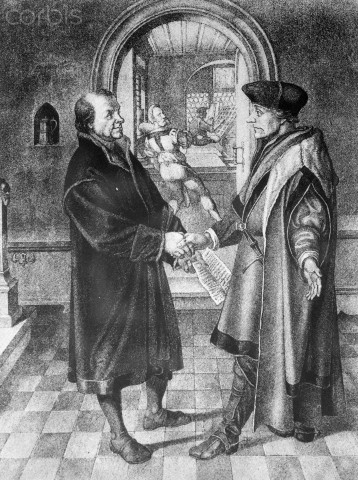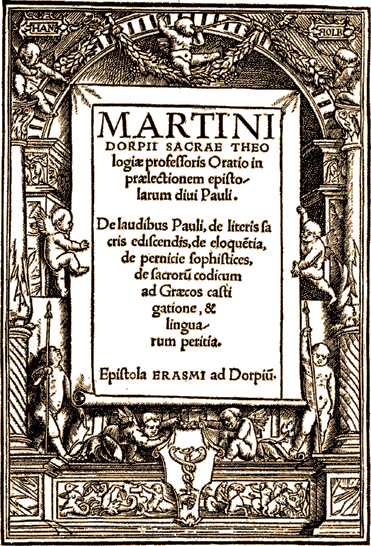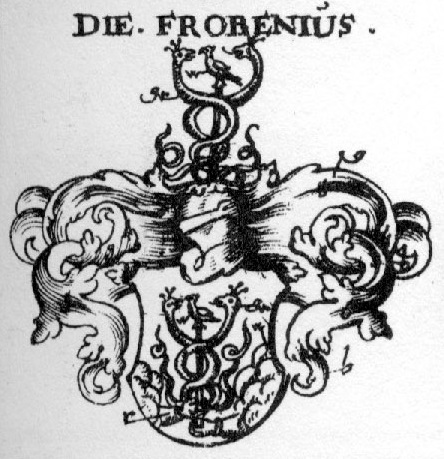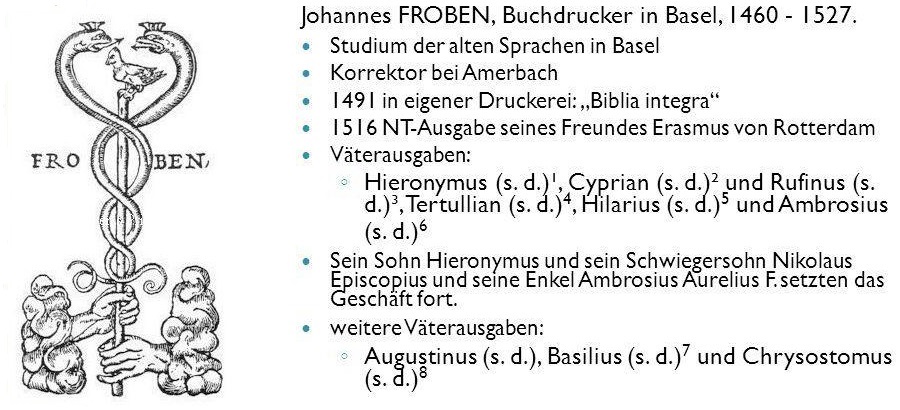The close personal relationship between Froben and Erasmus is perhaps unparalleled in the history of authors and their publishers, although it was surely in keeping with the climate and ideals of the time. It was Renaissance humanism in its most perfect form. With the death of Froben in 1527, Erasmus expressed his personal loss and sorrow. His grief for the death of his close friend was more distressing than that which he had felt for the loss of his own brother.

Erasmus was intrigued by the work that was undertaken by Amerbach and Froben for an edition of the writings of Saint Jerome. In July 1514, he set out to meet Froben.
Johann Froben was a printer in Basel who established the greatest Swiss publishing firm of the early sixteenth century. The house continued under the direction of his heirs and associates until 1587. A scholar himself, a master printer, and a successful businessman, he recognized the vitality of humanistic thinking. Froben had originally worked in Nuremberg, before moving to Basel in 1490.
The inclusion of Erasmus meant a major turning point for the firm. From about 1515, Froben was the main publisher used by Erasmus. In 1521, the latter moved from the Netherlands to Basel. It was Froben’s fine printing and humanistic scholarship that made him decide to make the move. It turned out to be a happy meeting of minds and skills. The greatest period of Froben’s work as a printer coincided with the years of his friendship with the celebrated scholar, the ‘prince of humanists’. Erasmus himself was delighted with the new environment in which he had settled. In a letter to Joannes Sapidus, he described his stay in Basel as ‘living in some charming sanctuary of the Muses, where a multitude of learned persons, and learned in no common fashion, appears a thing of course’. The vibrant intellectual climate and captivating atmosphere of the city inspired his finest work. The wandering scholar had found his home.
Froben was alert enough to offer Erasmus a fixed annual income of 200 gulden for his services and a fair share in the profits of the books produced. The two men entered into a proper business partnership. Working closely together, this relationship turned into a close friendship. Printing ancient texts demanded expert assistance. Manuscripts had to be obtained in the first place. When acquired, they needed to be evaluated, collated, and emendated. This task demanded scholarship of the highest level. Erasmus became the most eminent of ‘learned correctors’ at Froben’s publishing house.
Before moving to Basel, Erasmus had spent nine months in Venice with Aldus Manutius, the most famous printer in Europe. It was Aldus’s ambition to rescue from oblivion the work of the classical, especially Greek, writers. To this end he edited and printed those works for which workable manuscripts could be procured. Erasmus stayed with Aldus from January to September 1508. It was there that he learned the editorial trade by preparing an impressive number of texts, including editions of Plautus, Seneca, Terence, and Plutarch.
On 25 August 1517 Erasmus sent a letter from Louvain to Johann Froben in Basel. In it, he recommended the publication of More’s Utopia in combination with the Prolusions (the works were published together in the two 1518 – March and November – editions by Froben). If you think fit, Erasmus wrote, ‘let them go forth to the world and to posterity with the recommendation of being printed by you. For such is the reputation of your press, that for a book to be known to have been published by Froben, is a passport to the approbation of the learned’. Froben employed Hans Holbein to supply the woodcut borders to his edition.

This border takes the form of a Renaissance niche flanked by columns in which putti play around a shield showing Froben’s printer’s mark with a bird perched on top. Holbein’s brother Ambrosius designed the alphabet letter within the text. The book proved to be an overwhelming success.
Renaissance humanism equals the creative principle: a call for clarity, a delight in discovery, the fun of friendship, the ideal of internationalism, the love of learning, the rage for research. It is the happy meeting of great minds which, at its purest form, is represented by the collaboration between Desiderius Erasmus, Johannes Froben, and Hans Holbein.
source: Johann Froben, Holbein and Erasmus
The printer’s device of Johann Froben, by Hans Holbein the Younger about 1523 became the coat of arms of this branch of the family

